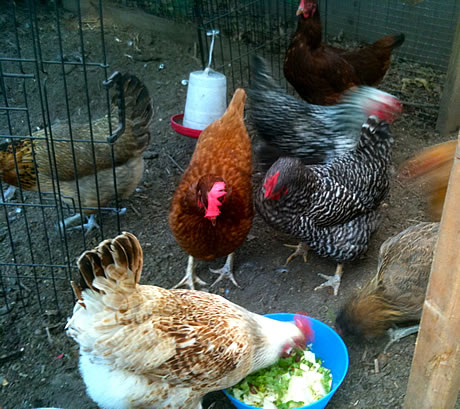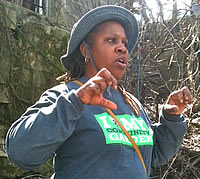
Previously, in Digging for Gold, Michael presented the results of his search for local humane-certified meat and animal products. Now he’s back to explain how to do a similar search in your area.
First off, brace yourself, because this isn’t easy. For one thing, there’s no central database for this information, so you have to cobble it together from many different sources. Also, there simply aren’t that many certified products, and the products that do exist can be impossible to locate online. Still, if you’re committed to eating humanely-raised meat, one local source can make all the difference, so why not give it a shot?
Note: Third-party certification doesn’t necessarily apply to all products made by a particular producer. The key thing is the seal. If a product has a certified seal, it’s certified. No seal, no certification.[ref]Actually, I found a few certified products that lack the seal. However, to preserve both time and sanity, it’s best to pretend this can’t happen.[/ref]
Let’s take it one certifier at a time.
American Humane Certified
- Go to http://thehumanetouch.org/certified-producers. This page lists all Certified Humane producers arranged by product type (beef, poultry, dairy, etc.). Each section includes a list of producers, their locations, and a link to their profiles. Click through to the profiles of promising producers.
- Read the producer profiles. If a producer still seems promising, click through to their website.
- Here’s where the going gets rough, because producer websites don’t necessarily indicate which products are certified, and only rarely identify where certified products are sold. If you run into trouble on either front, I recommend doing an advanced Google search on the term certified within the website. If this fails to uncover the necessary information, or more likely reveals that the information isn’t there, you might try contacting the producer directly. Otherwise, if you’re lucky enough to know the name of the product or products you’re looking for, move on to step #4.
- Try a search that combines the product name with the name of your city or region. This is how I found a source for bacon: I already knew the product name from the producer’s website, so I did a search that combined the product name with the phrase “New York.”
Certified Humane
- Go to http://www.certifiedhumane.org/about/whoiscertified.html. This page lists producers in two alphabetized groups: those who produce only certified products, and those who produce a combination of certified and uncertified products (the latter lists all certified products made by each producer). Click through to the websites of promising producers.
From here, refer to step #3 under American Certified Humane, above.
Animal Welfare Approved
AWA has three times as many producers as the other two groups combined. You might think this would make AWA-certified products more readily available, but that’s not the case–or at least not in New York.[ref]AWA works with smaller producers than the two other certifiers, so more AWA producers doesn’t necessary equal more AWA-certified products. For more on the differences between the certifiers, see One of These Things Is Not Like the Others.[/ref]
One thing AWA does have over the others is an online database. However, it’s not without its flaws. For example, search results include a hodgepodge of sources and suppliers: farms, farmers markets, online stores and catalogs, grocery stores and supermarkets, specialty foodshops, food processors/marketers/distributors, and especially (or especially in New York) restaurants. So if you’re only looking for certified products in local retail stores, your search results are going to include a lot of dead ends.
The steps:
- Go to http://www.animalwelfareapproved.org/awasearch/search/bystate_product and search on one or more product types within a particular state. Click through to profiles of promising sources.
- Read each profile, and if a source still seems promising, click through to its website.
- From here, refer to step #3 under American Certified Humane, above.














